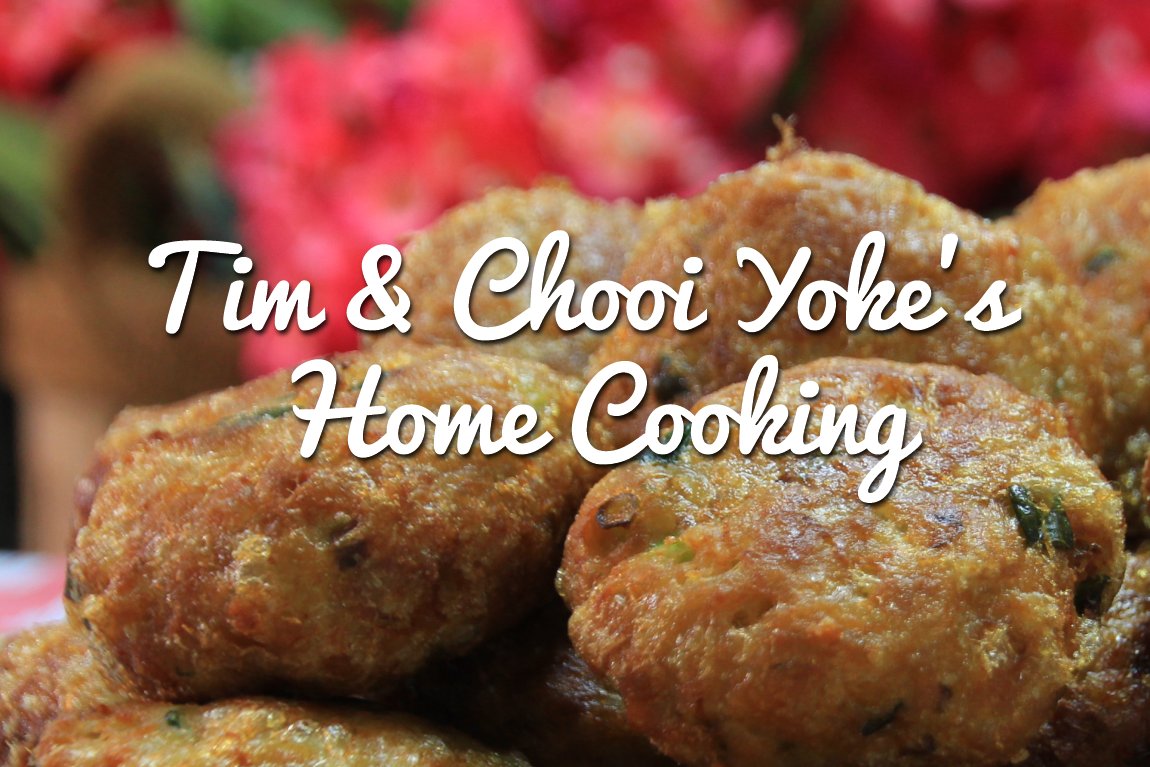

Kuih Kodok 
 Go Back - Latest PENANG Sights/Streets/New Properties > Malaysia > World | Hokkien : Lessons : Dictionary | YouTube | Facebook | About Me : Contact Me
Go Back - Latest PENANG Sights/Streets/New Properties > Malaysia > World | Hokkien : Lessons : Dictionary | YouTube | Facebook | About Me : Contact Me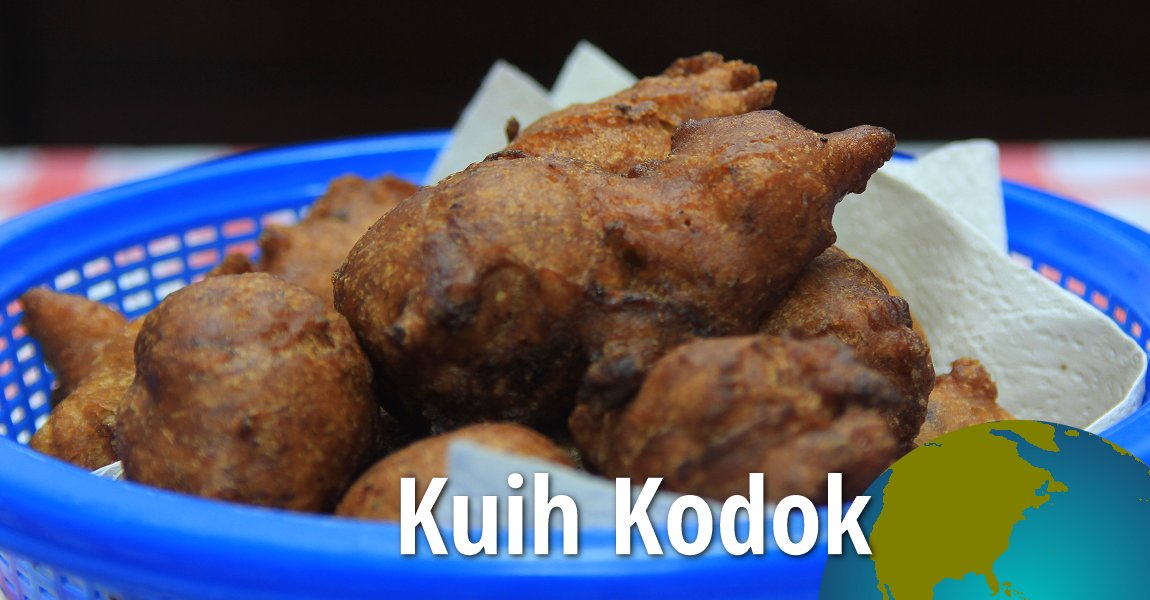 Kuih Kodok (21 January 2018)
Kuih Kodok (21 January 2018)
Kuih Kodok
 is a deep fried local delicacy made of batter and mashed banana. Also known as chorkodok
is a deep fried local delicacy made of batter and mashed banana. Also known as chorkodok  or mashed banana fritters, it is often available at hawker stalls selling goreng pisang (or in Malay, pisang goreng) and other deep-fried fritters. The difference between kuih kodok and goreng pisang is that the latter uses unmashed bananas. The kuih kodok is round in shape with rather rough surface, an appearance reminiscent of the toad from which it got its name (kuih kodok means "toad kuih" in Malay.)
or mashed banana fritters, it is often available at hawker stalls selling goreng pisang (or in Malay, pisang goreng) and other deep-fried fritters. The difference between kuih kodok and goreng pisang is that the latter uses unmashed bananas. The kuih kodok is round in shape with rather rough surface, an appearance reminiscent of the toad from which it got its name (kuih kodok means "toad kuih" in Malay.)At home, my wife makes excellent kuih kodok, something I realised when our kitchen was filled with its aroma. It is a perennial joke in my house that the kuih kodok look like roasted rats in batter. Just take a look at photos of it below.
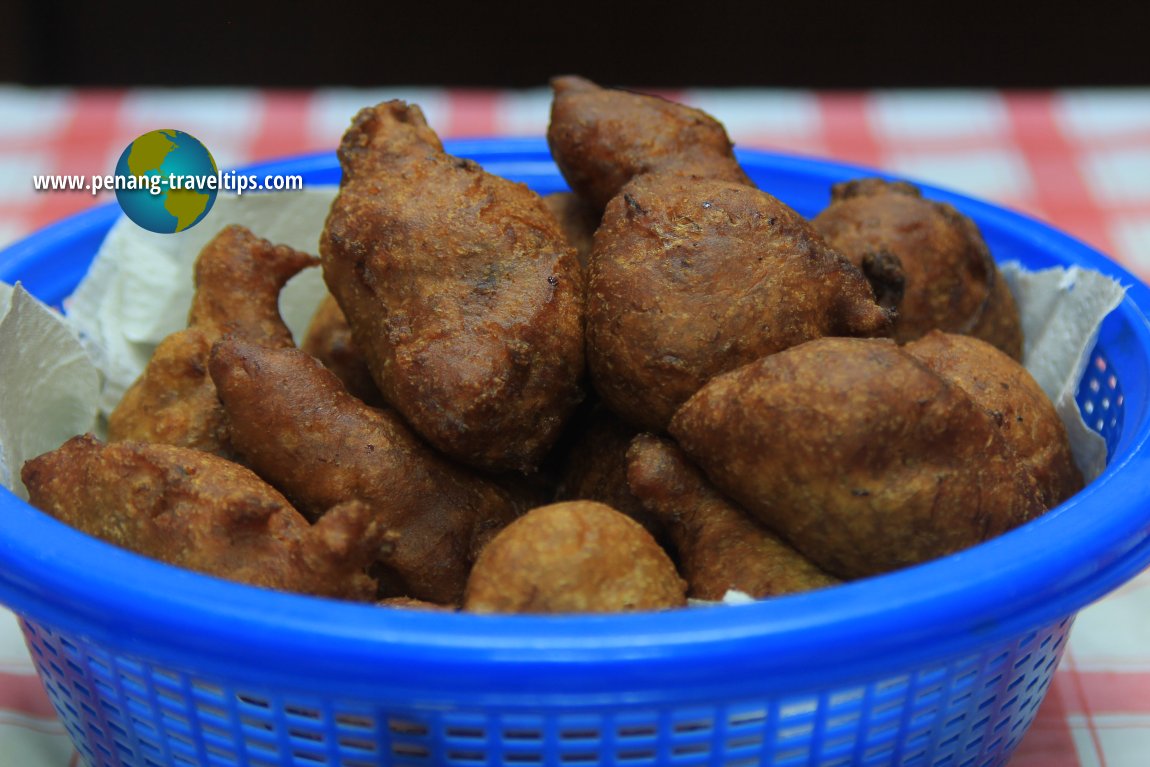 Kuih Kodok (21 January 2018)
Kuih Kodok (21 January 2018)
Kuih Kodok Recipe
The Ingredients- Ripe Bananas - your choice, we often use pisang emas, ang3bak1cio1 and pisang rastali
- Caster Sugar/Brown Sugar (again, your choice), or a mix of both
- Self Raising Flour
- A bit of Salt
- Water
- Oil
The Steps
- Peel and mash the bananas using a fork and put inside a deep bowl.
- Add in sugar or brown sugar to taste. Mix well and leave aside for 5 minutes. Brown sugar will give the kuih a darker shade.
- Add in a bit of salt to enhance the sweetness.
- Sift in self raising flour.
- Mix with a pair of chopstick or spatula.
- Add in a bit of water.
- Mix until the mixture is not too runny or too thick.
- Add in a bit of oil into the mixture. Mix well and put aside.
- Heat some oil in a wok or small pot.
- Scoop a spoonful of mixture and put inside the hot oil.
- Turn the kuih kodok midway to have an even color.
- Dish out once kuih is brown in color, and put on a piece of kitchen towel to drain out the excess oil.
- Serve.
The above kuih kodok was made by my wife on 21 January, 2018, using some leftover bananas (I am not sure what type they were) lying about the house. They tasted fantastic fresh out of the hot oil. If only I can encapsulate the aroma and share with you, you would know what I mean. Knowing that my in-laws would love to have some of these, we apportioned out some, and brought over to my in-laws' place. It was served to my father-in-law and my mother-in-law.
As soon as my mother-in-law took a bite of it, she remarked, "You added self-raising flour to the batter, right?"
Well, yes, my wife did. But that was not how my mother-in-law liked her kuih kodok. She preferred the traditional method using just plain flour, and no added self-raising flour. Honestly, I have no idea what that would taste like. Nevertheless, my wife was unperturbed, and decided she was going to make kuih kodok again.
So the very next day (yesterday), she went to the market early in the morning, and to her delight, she found a hawker selling pisang masam, a type of banana that she loves, but had not seen for decades. She described it as having a "sweet and soury taste". Up till then, I have not known of pisang masam, and was a bit hesitant whether I would ever enjoy banana that is described as "soury". Later yesterday, she came home with the banana, opened the paper bag and let me have a feel of the aroma. Wow, pisang masam has a most pleasing aroma, stronger than many other types of bananas.
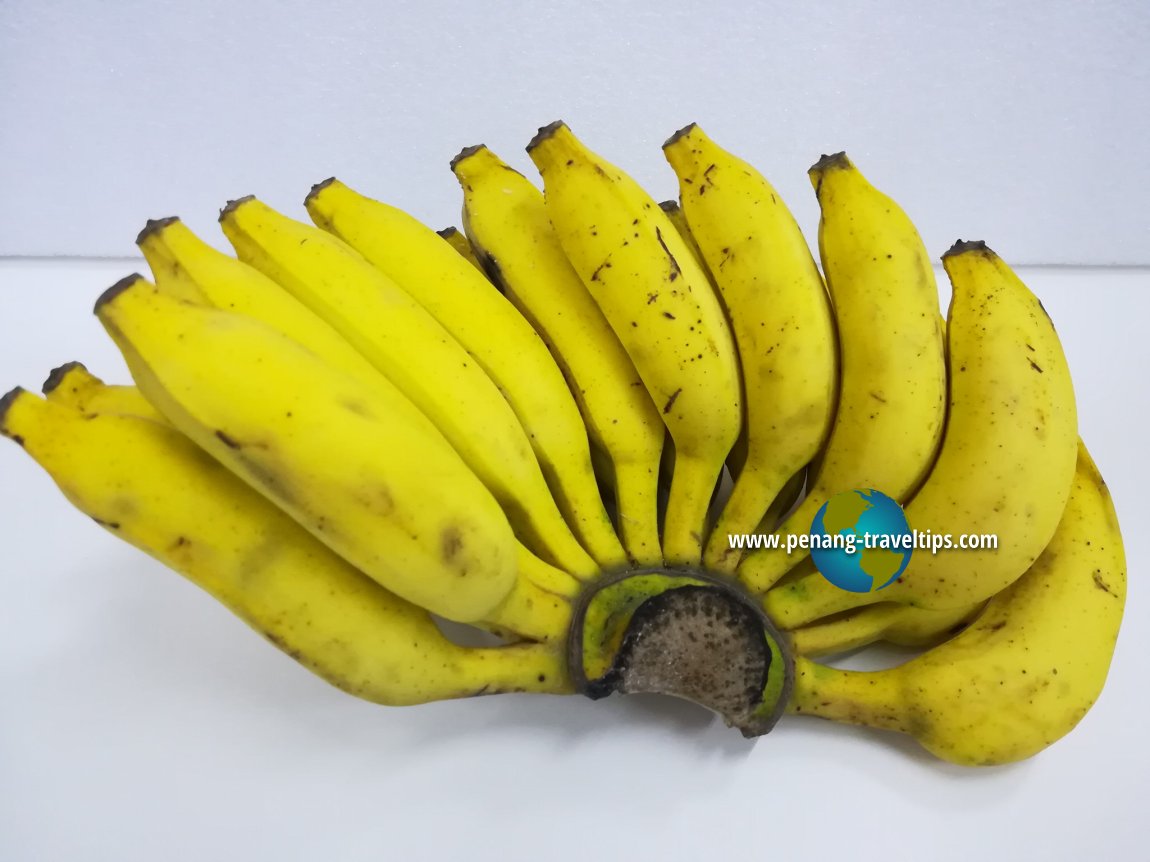 Pisang Masam (22 January 2018)
Pisang Masam (22 January 2018)
I tried one of the pisang masam and found that it was really good. It is not as sweet as pisang emas, my favourite type of banana, but does have a pleasing taste to it.
This morning, my wife used some of the pisang masam to make kuih kodok again. But this time, she made two batches, one without self-raising flour, specially for my mother-in-law, and the other with self raising flour. You can see them below. The one on the left is without self-raising flour.
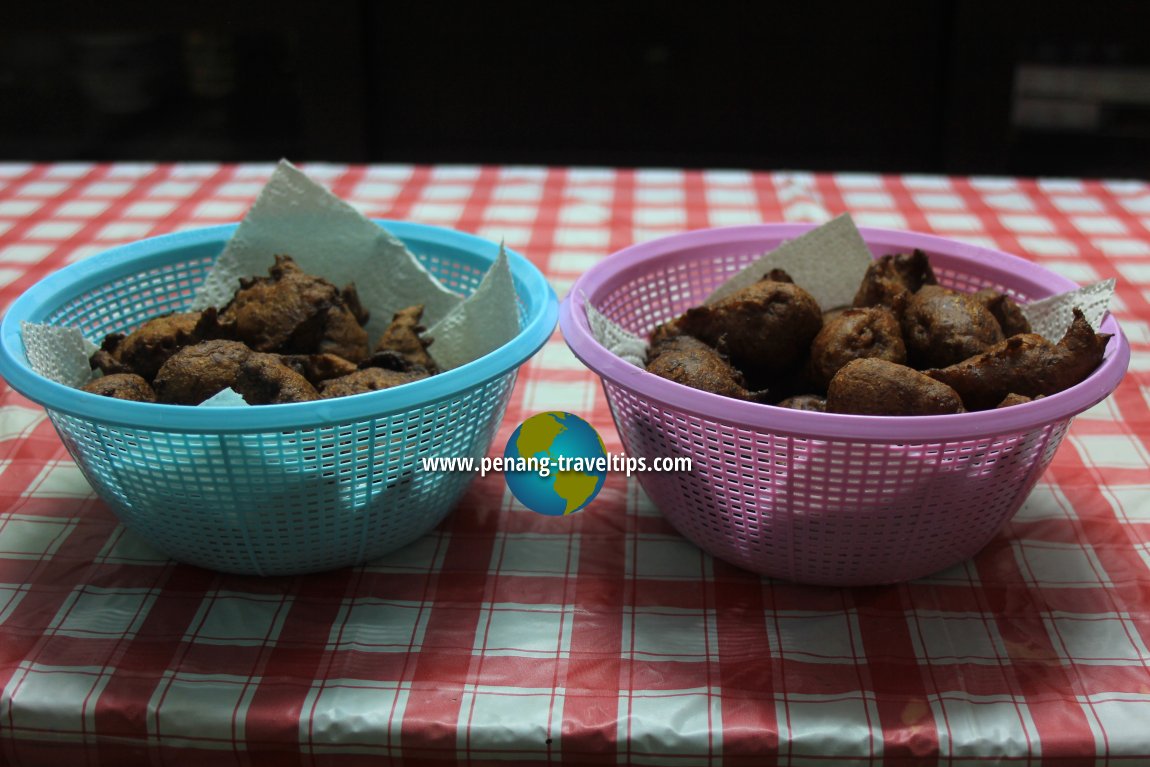 Kuih Kodok (21 January 2018)
Kuih Kodok (21 January 2018)
Can you tell the difference? Okay, the one without self-raising flour has a rougher texture, while the one with self-raising flour is puffier and more rounded. Let me show you each of them one by one below.
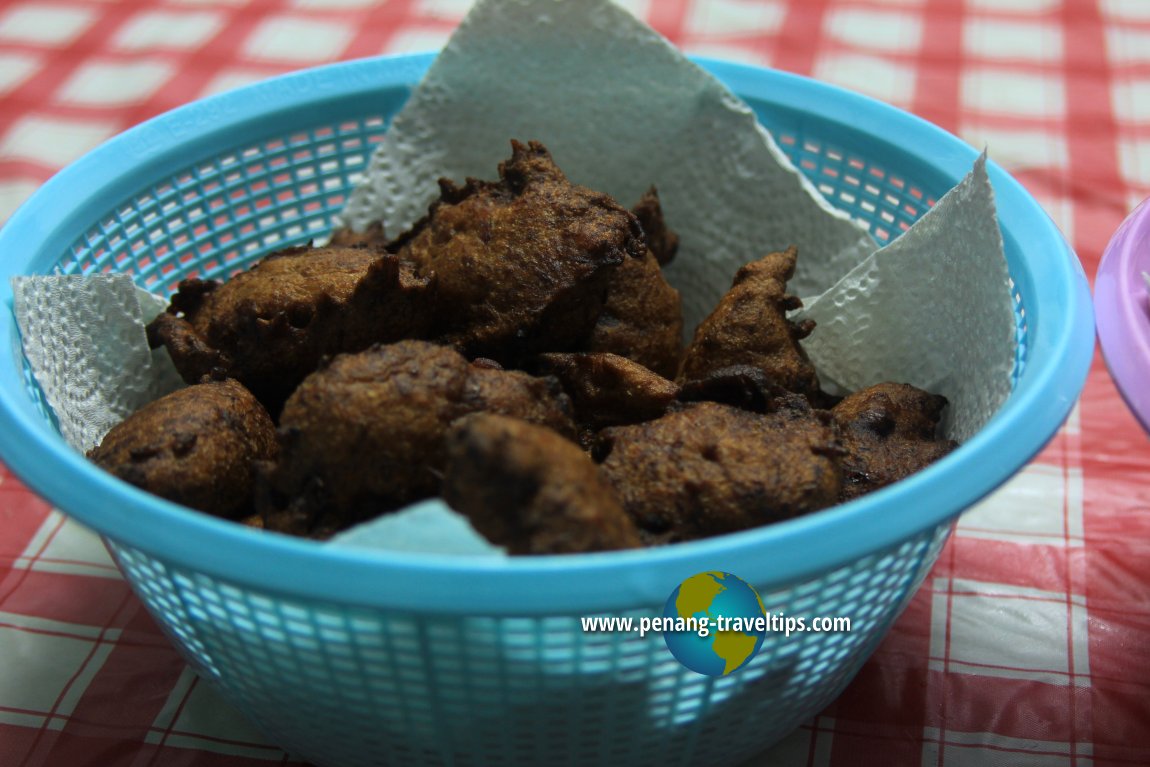 Kuih Kodok without self-raising flour. (21 January 2018)
Kuih Kodok without self-raising flour. (21 January 2018)
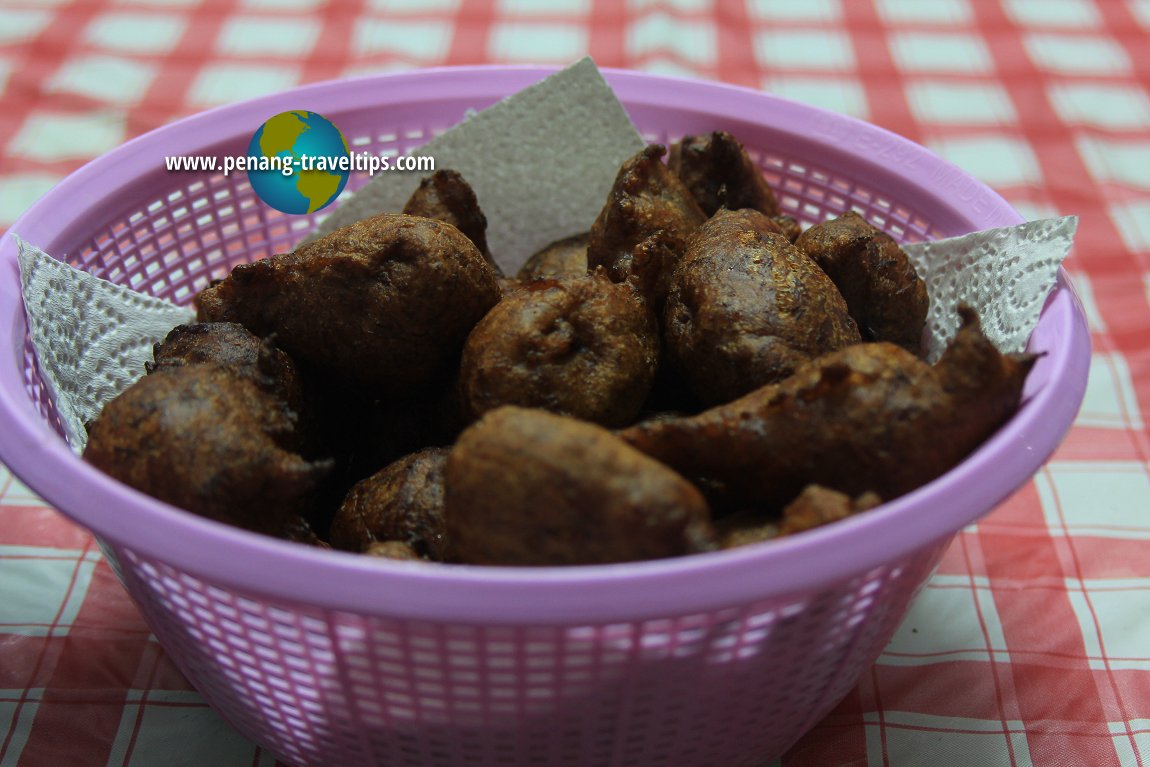 Kuih Kodok with self-raising flour. (21 January 2018)
Kuih Kodok with self-raising flour. (21 January 2018)
Which do I like more? Well, the one with self-raising flour! It is puffier, and in my opinion, tastes better. But since my mother-in-law liked it the traditional way, without self-raising flour, my wife made it her way to satisfy her.
Kuih kodok tastes best with coffee black (or black coffee), without milk or sugar. The sweetness of the kuih kodok goes so well with the taste of unsweetened coffee. And that's what I had this morning. Lovely.
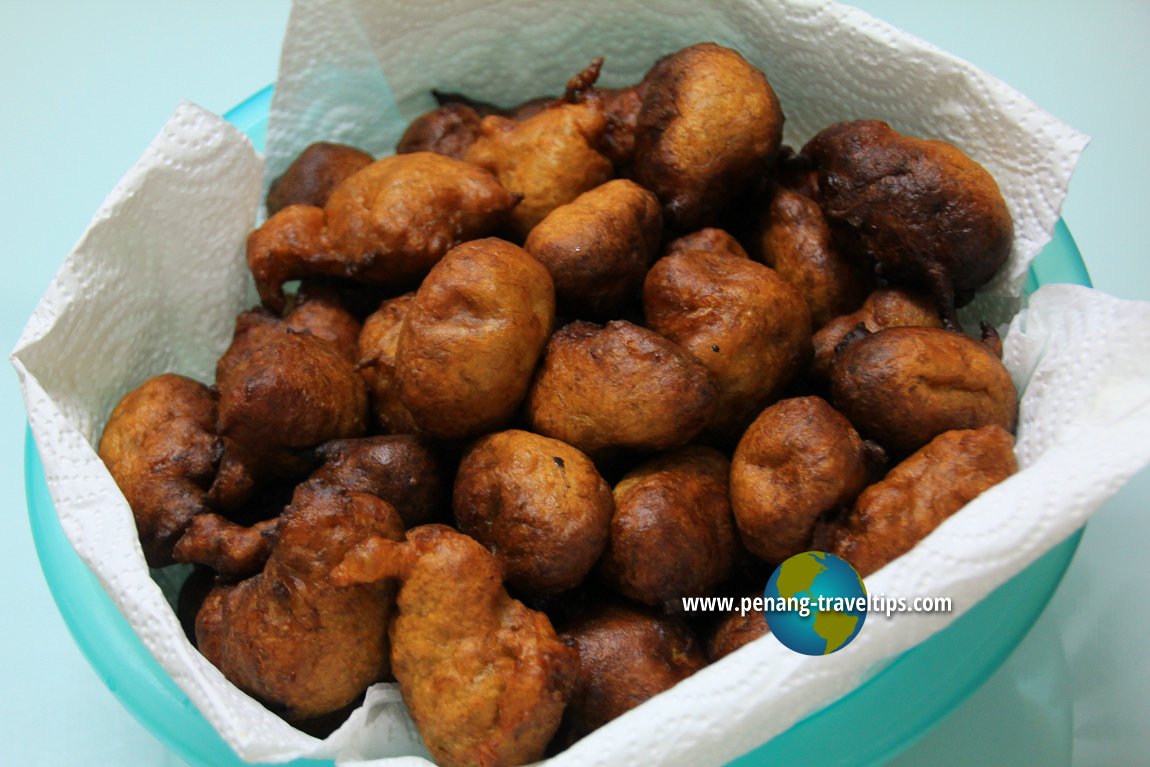 Kuih Kodok (23 March 2013)
Kuih Kodok (23 March 2013)
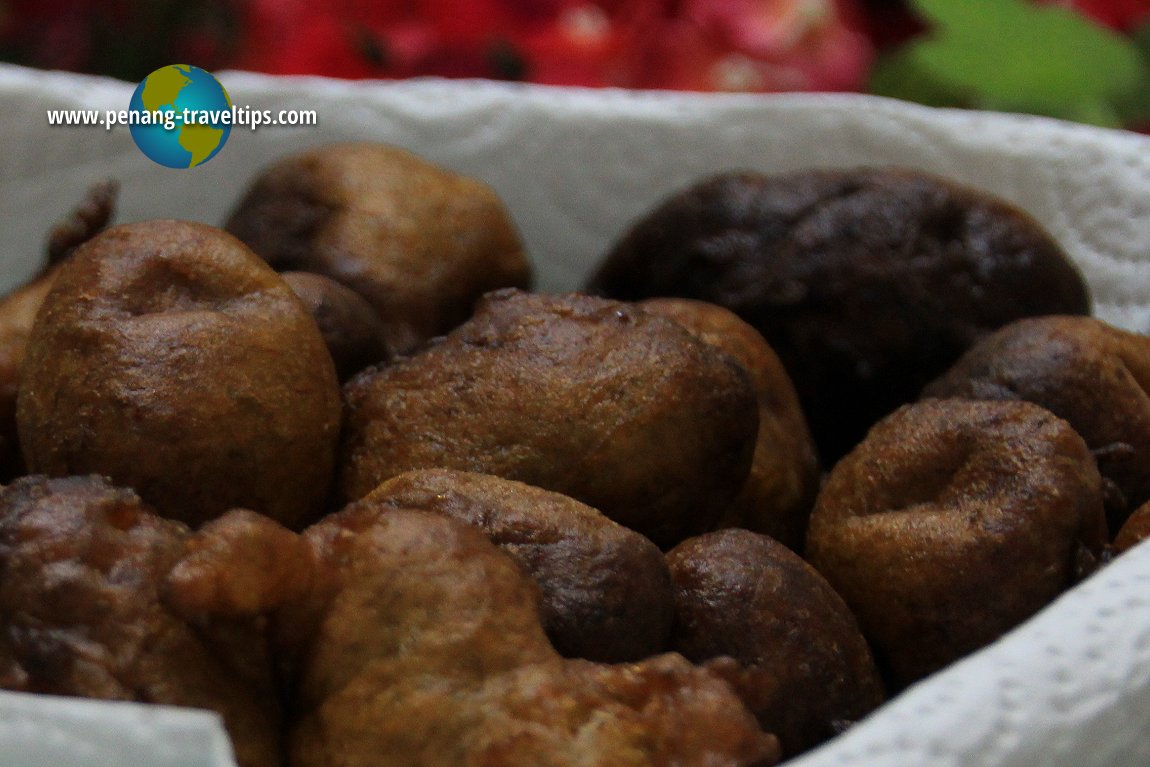 Kuih Kodok (23 March 2013)
Kuih Kodok (23 March 2013)
List of Nyonya Kuih
Tim & Chooi Yoke's Recipes of Homecooked Food
Let us share our recipes of homecooked food with you.Details
Latest from Discover with Timothy: Gurney Bay - what to see and do there
About this website

Hello and thanks for reading this page. My name is Timothy and my hobby is in describing places so that I can share the information with the general public. My website has become the go to site for a lot of people including students, teachers, journalists, etc. whenever they seek information on places, particularly those in Malaysia and Singapore. I have been doing this since 5 January 2003, for over twenty years already. You can read about me at Discover Timothy. By now I have compiled information on thousands of places, mostly in Peninsular Malaysia and Singapore, and I continue to add more almost every day. My goal is to describe every street in every town in Malaysia and Singapore.
Robbie's Roadmap
- Episode 1: Robbie's Journey to Financial Freedom
- Episode 2: Lost in America
- Episode 3: The Value of Money
- Episode 4: The Mentor
- Episode 5: The Thing that Makes Money
- Episode 6: The walk with a Billionaire
- Episode 7: The Financial Freedom Awakening
- Episode 8: Meet Mr Washington
- Episode 9: The Pizzeria Incident
Copyright © 2003-2024 Timothy Tye. All Rights Reserved.

